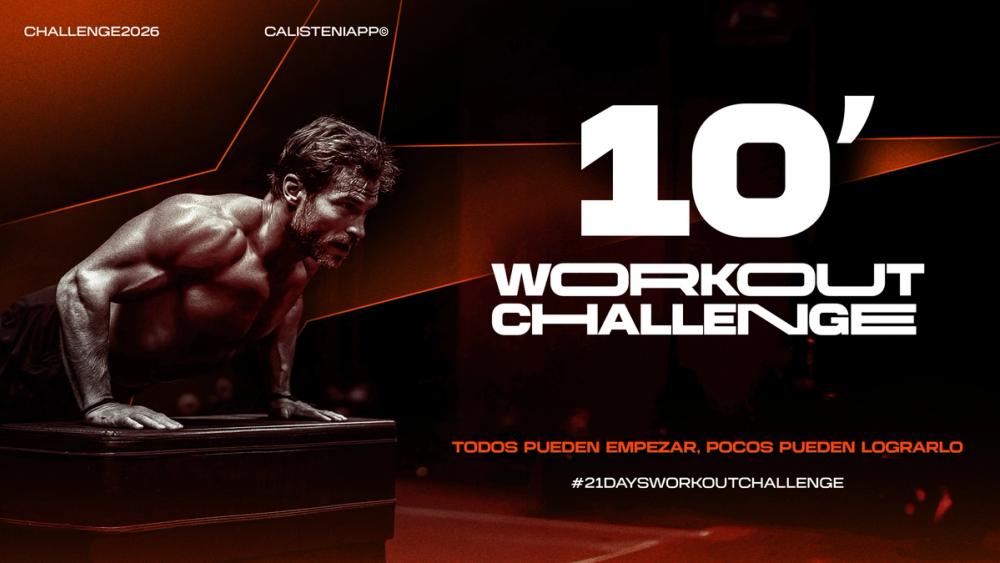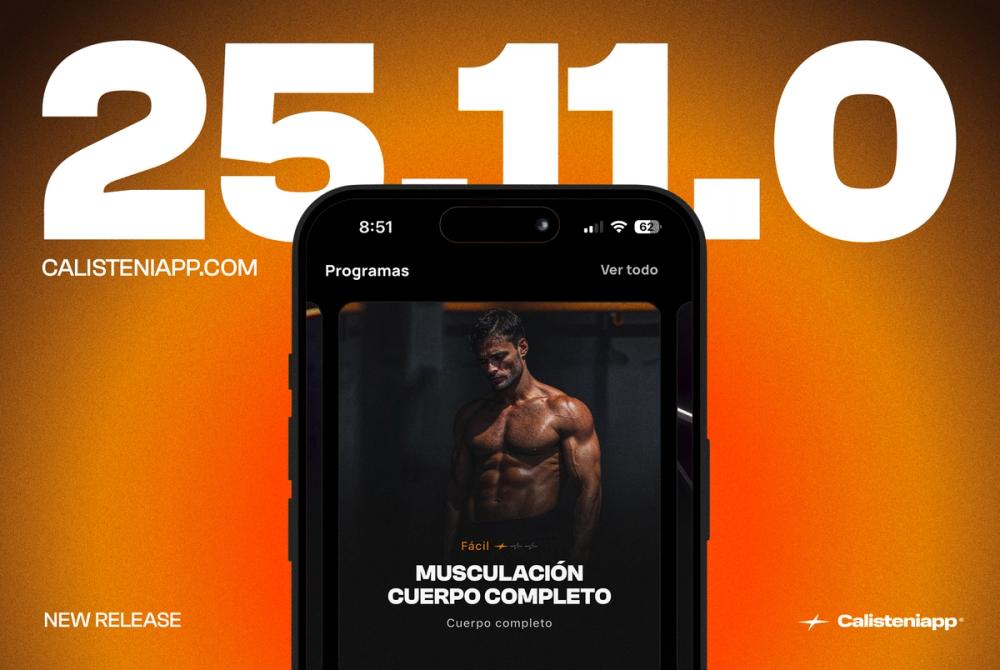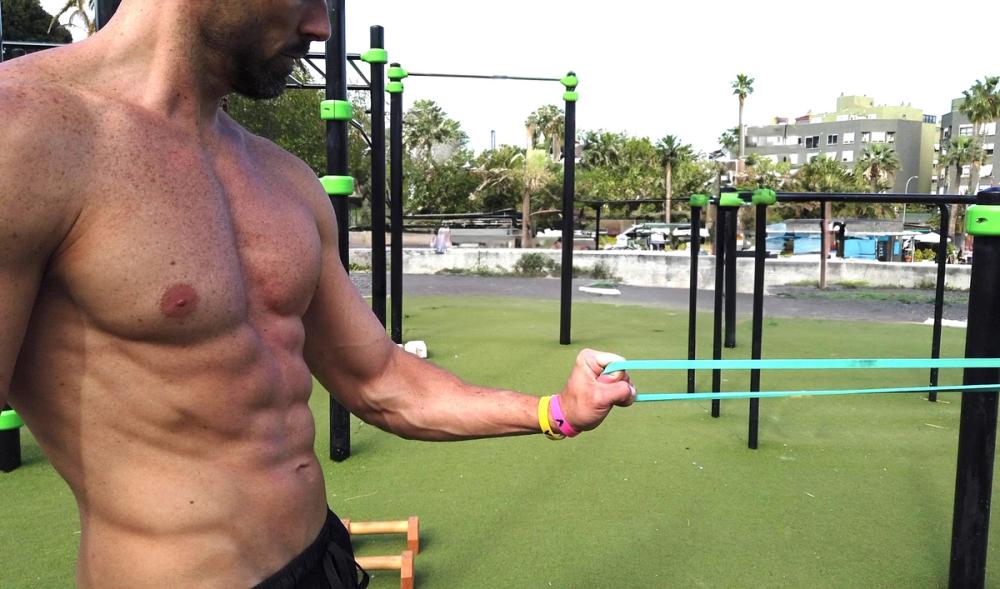
Calisteniapp 10' Workout Challenge
Start training or give your routines a boost with this 21-day Calisthenics challenge for all levels that will put your discipline to the test.

Over the more than 10 years I’ve been sharing calisthenics content and helping people achieve their goals, I’ve noticed that it’s very common for beginners in this sport to have an initial burst of enthusiasm for achieving multiple goals at once.
For example, many people have a broad goal of getting in shape, gaining some muscle mass, leaning out, and looking more aesthetic. At the same time, they might also want to learn some signature calisthenics moves, like the muscle-up, handstand, or even progress toward a planche or front lever.

These moves aren’t just emblematic of our sport; they’ve taken on a special status, often viewed with admiration and respect within the community.
The Challenge of Multiple Goals
The problem is that when you’re pursuing multiple goals at the same time, if you don’t plan well, you risk spreading your efforts too thin. This can lead to not achieving any of your goals, progressing too slowly, or becoming frustrated with the process.
In today’s article, I want to help you plan these multiple goals effectively and synergistically, so the process feels manageable, logical, and well-structured.
First, it’s important to understand that the more goals you try to achieve simultaneously, the harder it will be to plan and the lower your chances of success. I recommend focusing on no more than two goals at a time.
Additionally, analyze each goal carefully to see how you can create direct synergies so that one goal complements the other. For example, if your goal is to build muscle mass and also master the muscle-up, you can align your training by incorporating exercises that progress toward the muscle-up on back-and-biceps training days. For instance, explosive pull-ups are a great exercise that serves both goals.

Another example: If your primary goal is to build overall strength with calisthenics but you also want to learn the handstand, you can dedicate 10 minutes to practicing freestanding handstands at the start of your push-focused workouts. This serves as an excellent warm-up while also creating synergy between the two goals.
Now that we’ve covered these preliminary considerations, let’s discuss how to structure your plan in detail.
The first step is to clearly define your priorities. Decide which goal is your primary focus and which is secondary. I don’t recommend trying to give all your goals equal importance because, in my experience, that approach makes it much more likely that you won’t achieve any of them.
Once you’ve established your priorities, plan your weekly training schedule accordingly. For example, if you train four days a week, you could allocate three days to your primary goal and one day to your secondary goal.
Here’s an example: If your main goal is to build muscle while also working on the muscle-up, your weekly plan could look like this: one day focused on hypertrophy for pushing exercises, one day on pulling exercises that include muscle-up progressions, one leg day, and a fourth day dedicated to muscle-up technique and progression.
This way, your weekly routine prioritizes hypertrophy while also making steady progress toward the muscle-up.
In my personal case, my primary goal right now is to build strength in weighted calisthenics exercises (weighted pull-ups, dips, squats, and muscle-ups), but I’m also working on progressing my planche. To align these goals, I dedicate one day to each weighted exercise and use my dips day to create synergy with my planche training.
Since the muscles used in planche exercises are the same pushing muscles targeted in weighted dips, I include exercises like handstand push-ups that use the same muscle groups but in a vertical pattern, which is more specific to the planche. I also set aside a separate day to focus solely on planche progressions.
Here’s how my current weekly routine looks:
As you can see, I’ve prioritized my main goal with four specific days for it, created synergy between my goals on push day, and added a dedicated day for my secondary goal.

If you’re a user of Calisteniapp, achieving a plan like this is incredibly easy. Simply set up your primary goal with one of our training programs and add it to your calendar. Then, use one of our EVO routines for your secondary goal and add a day or two of that routine to your calendar. In upcoming updates, we’re planning to automate this process so the app can do it for you—stay tuned!
I hope this article helps you structure your training effectively,

Yerai Alonso
Cofundador de Calisteniapp, referente en calistenia y el street workout en Español. Con más de una década de experiencia, es creador de uno de los canales de YouTube más influyentes del sector. Autor del libro La calle es tu gimnasio, campeón de Canarias y jurado en competiciones nacionales e internacionales.
Join our newsletter
Learn everything you need to know about calisthenics

Start training or give your routines a boost with this 21-day Calisthenics challenge for all levels that will put your discipline to the test.

Calisteniapp is a symbol that represents our obsession with excellence, our essence, and the path we want to define for the next ten years.

Descubre los mejores ejercicios de antebrazo para calistenia. Mejora fuerza, agarre y control corporal con entrenamientos efectivos sin pesas.
